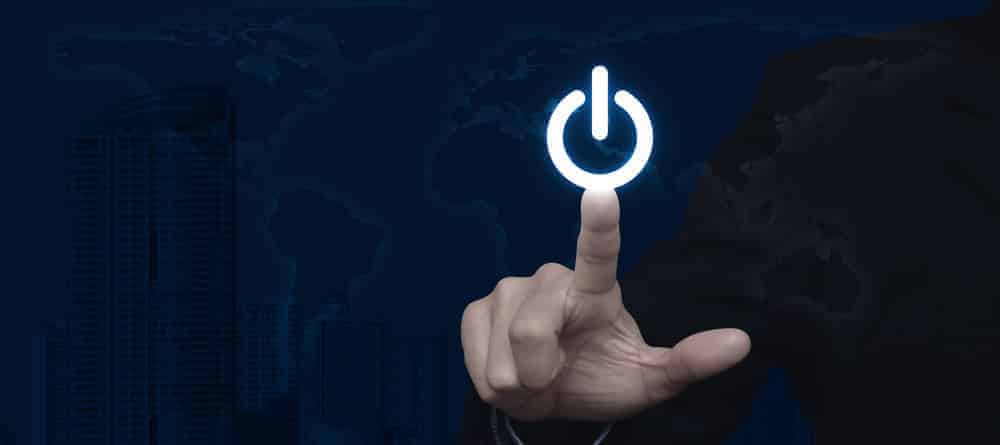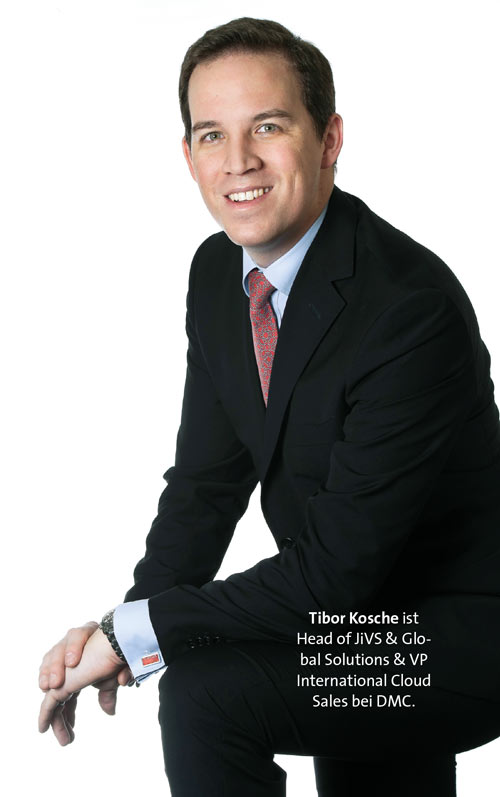Switching off is part of the strategy


Switching off is part of the strategyGlobal corporations are operating in an extremely dynamic market environment that is experiencing dramatic upheavals as perhaps never before due to digitalization. They are therefore faced with the problem that their own IT landscape is both a curse and a blessing.
A blessing, because the company's IT becomes the central component of its own value chain and business model. A curse, because in many cases it is too heterogeneous to really fulfill its strategic role.
This heterogeneity is not the result of poor decisions in the past. Rather, it is almost inevitable, especially when companies grow and operate internationally.
For a long time, new locations or acquisitions were synonymous with local IT locations and systems. In addition, there were and still are local laws that stipulate the storage of certain information, whether data or documents, within national borders.
What applies to almost all internationally active companies is particularly true for Deutsche Telekom. With around 165 million mobile customers, 28.5 million fixed-network lines and 18.5 million broadband lines, the Bonn-based Group is one of the world's leading integrated telecommunications providers and is represented in more than 50 countries.
The more than 218,000 employees generated around two thirds of the Group's turnover of 73.1 billion euros in 2016 outside Germany.
Complexity: The Gordian knot of the digital era
The complexity of such a global corporate structure is mirrored by the corresponding complexity of the IT landscape - unless IT takes a strategic approach.
The word "strategic" cannot be emphasized enough in this context. After all, a strategy means a long-term planning horizon and requires investment. For both, the IT organization needs the full backing and active support of the Management Board.
"Many companies are reluctant to tackle the historical and business-related uncontrolled growth in IT. And for good reason: after all, this task is like cutting the Gordian knot"
Tibor Kosche, Vice President International Cloud Sales at T-Systems Data Migration Consulting (DMC), knows from his own experience; at DMC he is responsible for the project to decommission Deutsche Telekom's legacy systems.
"But if you want to conquer new horizons in the age of digitalization, you have to accept this challenge and change and simplify the IT landscape from the ground up.
Even Alexander the Great could only begin his triumphal march in Asia when he had not untied the knot slowly, but cut it with a single blow."
Deutsche Telekom's IT organization took on this gigantic task in 2012 and won the unreserved approval of the Group Management Board for the project. In a project lasting several years, which was given the descriptive name "One.ERP", the three-digit number of existing ERP systems was to be reduced to a single, central ERP solution.
Every ERP specialist knows that such a simplification is itself very complicated. This is because one of the trickiest aspects of such a project is the question of what should happen to the legacy systems once the data has been transferred to the new central system.
"In principle, there are three answers to this. The legacy systems will continue to be operated and maintained as long as the information stored in them must be retained by law.
Secondly, the legacy systems can be frozen in a kind of 'time capsule' as an app in a virtual environment, saved on a DVD or other medium and booted up when required, also until the end of the retention period.
Alternatively, it is possible to separate the stored information from the original application and then operate the extracted data and documents on a separate platform"
explains Tibor Kosche.
Centralization through historization
Each of the three variants has specific advantages and disadvantages. Simple continued operation is certainly the most expensive, but program errors and security gaps can be rectified and closed.
Encapsulating legacy applications reduces operating costs to practically zero, but also freezes program errors and gaps. Another risk is that any necessary system adjustments, for example because legal requirements change or new ones are added, such as the current European General Data Protection Regulation (EU GDPR), can no longer be made.
Finally, operating costs are incurred in the third scenario. Although these are considerably lower than the operating costs for the legacy systems, everything here depends on the range of functions of such an information platform.
In particular, the ability to really extract all information from the legacy systems and connected document archives, i.e. not only the data but also the documents that are stored in an SAP system, for example, should be mentioned here. This is the basic prerequisite for decommissioning legacy systems.
A second is to retain the logic of the transferred data and documents. In this context, it therefore makes more sense to speak of historization - in contrast to classic archiving, where the archive is still accessed via the original application.
Deutsche Telekom, or more precisely the Telekom IT - GHS/ERP Solutions division, examined all three options in a comprehensive analysis. The costs were not the only decisive criterion.
Avoiding legal risks was at least as important. According to Tibor Kosche, these were some of the considerations at the time:
"Even though the decommissioning of legacy systems and the implementation of a central information platform was the best conceptual fit for the 'One.ERP' strategy, there were still other issues to be clarified:
- How compatible is a central platform with legal regulations on data localization?
- Can particularly sensitive data be stored in highly encrypted form?
After all, the German government is also one of the Group's customers and telecommunications secrecy applies."
To make matters worse, only a handful of providers can offer a solution for separating information and source systems.
If a decision made in favor of one provider in the project turned out to be a mistake, there would only be a few alternatives available, if they were of equal value at all. The available offers therefore had to be examined particularly thoroughly.
Acceptance litmus test
User acceptance is crucial for every IT project. And it's not just about the approval of those who work with the system to be replaced on a daily basis, but also those who only access it occasionally, such as internal or external auditors.
After all, the less you can practise, the more difficult it is to relearn. Therefore, it is not only the technical knowledge of the implementation partner that is important, but above all the specialist knowledge.
"Only those who speak the language of the specialist users and can prove in support that they actually understand what they are talking about can win over the experts from the specialist departments"
Kosche knows.
"This ability is certainly one of the reasons why the initial and typical reluctance of users has now given way to greater satisfaction."
Telekom IT - GHS/ERP Solutions, together with Detecon and T-Systems Data Migration Consulting, has developed a standard procedure for decommissioning IT applications using the JiVS platform to transfer data and documents from the legacy systems.
An important part of this process is the definition of the views of the historicized information, which reproduce and maintain the original business logic. SAP provides numerous standard views in the standard system, but only the read-only mode variants can be used for historicization, as information that has been historicized may not be subsequently changed.
These SAP-specific views are also available in JiVS, so that only a few views developed in-house need to be implemented as part of the project, which significantly reduces the project effort.
"As a rule, we can map 95 percent of the views defined with the specialist departments using the standard views in JiVS. While a project to retire a large IT application usually takes longer than twelve months, in the end, together with the largely automated data transfer, we manage to historicize the data of a legacy system at Deutsche Telekom in six to eight weeks on average"
says Tibor Kosche confidently.
The advantage here is that JiVS can be used to decommission not only existing SAP systems for ERP etc., but also those from other manufacturers or in-house developments. Deutsche Telekom has already had positive experiences with this and has shut down individual solutions and IBM Optim.
Telekom IT has now shut down well over 100 legacy systems. If data historization was required, this was carried out on the JiVS platform in most cases.
The retirement process model covers the entire shutdown procedure and is so successful that it has been certified by the auditing firm PWC.
However, the project passed the actual litmus test with a tax audit by the tax office. It is noteworthy in this context that some of the information requested by the auditors is not even stored at the implementation site of the central JiVS platform, but in local databases on site, wherever this is required by state law.
These successes have also been positively received by the Group Management Board. The standard procedure for decommissioning legacy systems is now aptly named "Retirement" and is part of the "Telekom IT" strategy.
This has enabled the Bonn-based company to reduce IT complexity and save tens of millions in operating costs each year. Incidentally, the volume of historicized data and documents is now in the upper double-digit terabyte range.
"We expect to reach the 100 TB mark in 2019"
adds Tibor Kosche.
Nevertheless, the number of JiVS users is currently manageable at around 100. As the historicized information only needs to be accessed infrequently, only a few users per department are granted the corresponding rights.
Basis for innovation and legal certainty
However, the business benefits of a centralized IT landscape go far beyond cost savings. For example, centralization allows extensive standardization of processes across departmental and national borders.
This not only increases transparency for the respective decision-makers, but also ensures and raises the quality of the individual processes.






